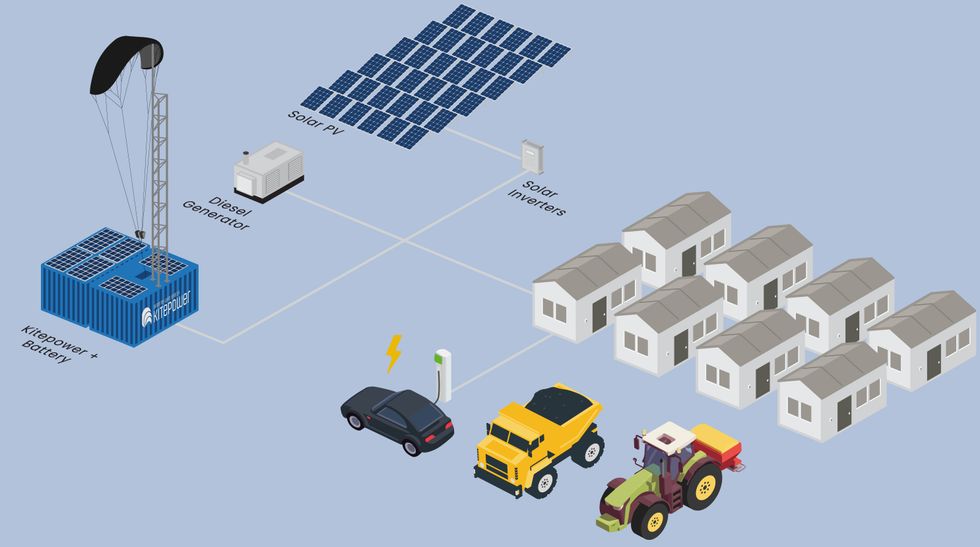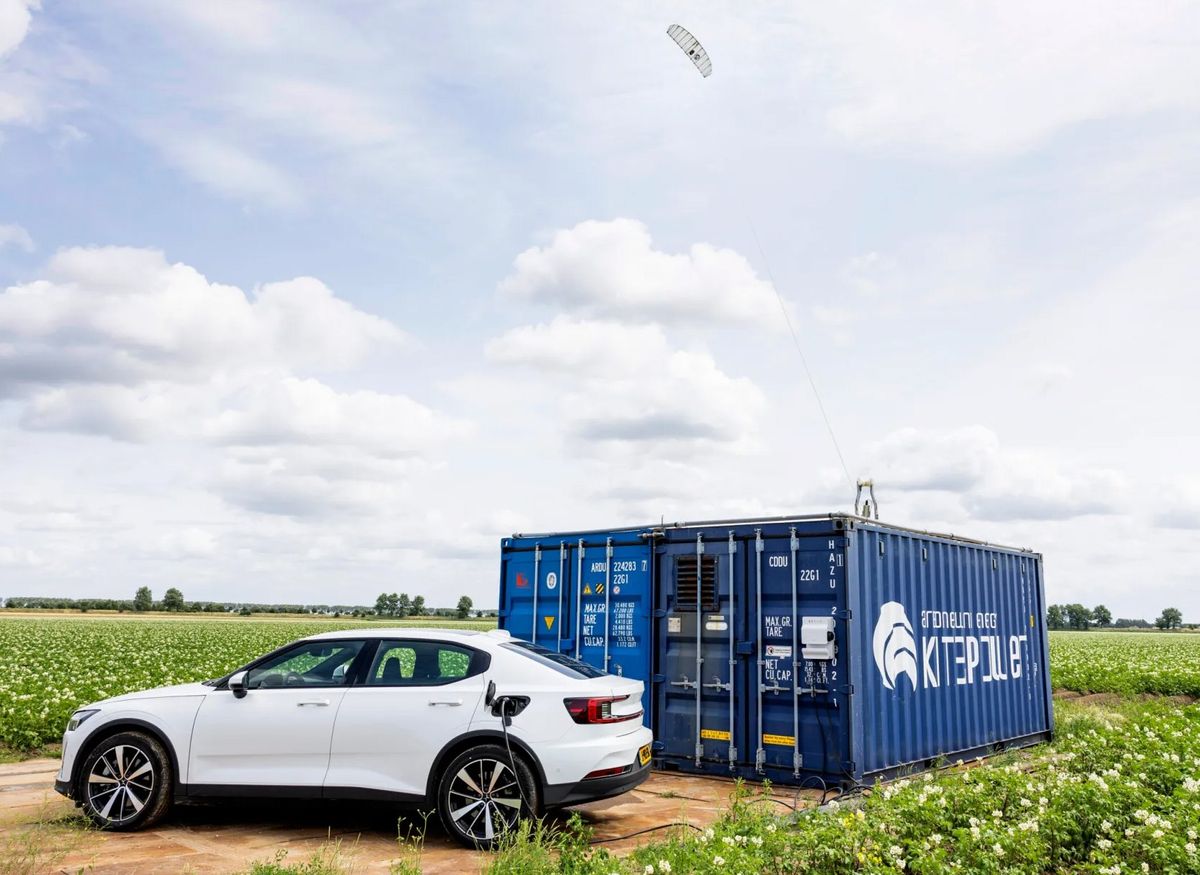On average, a humble wind turbine uses less land area per megawatt-hour than almost any other power source. Even so, a wind turbine and its tower can sometimes be too cumbersome.
The still-nascent field of airborne wind energy (AWE) has a solution: Swap out the turbine for a kite on a string. Not only is a kite nimbler than a turbine, it can deliver a more constant energy supply.
The steady, intense winds some 500 meters above sea level are capable of generating 1,800 terawatts: enough to power the entire planet multiple times over. Even an entire flock of Kitepower’s Hawks will only tap the lightest touch of that potential power.
One entrant trying to put AWE to market is the appropriately named Kitepower. This year, the Netherlands-based company will begin shipping its first system: the 40-kilowatt Hawk. Far from replacing traditional turbines, Kitepower hopes the Hawk can power sites that might turn to polluting diesel generators: temporary microgrids, for instance, or remote locations removed from the main grid.
The Hawk’s kite isn’t the kind you ordinarily fly for leisure. Rather, it is a fiberglass skeleton undergirding an inflatable wing, up to 60 square meters surface area. It flies in “pumping” cycles: the kite reels out, then a winch reels the kite back in. While the Hawk unfurls, the kite weaves to and fro in a figure-eight pattern, optimal to catch crosswinds. As the winds pull at the kite, they also pull at its tether—generating electricity on the ground.
After the tether reaches its maximum length, the ground station winches the kite back in. Though the Hawk must expend energy for reel-in, it expends only a fraction of the energy, resulting in a net energy gain that varies by wind speed. An entire cycle takes about 100 seconds: 80 for reel-out and 20 for reel-in.
Additionally, the Hawk comes attached to a 400-kilowatt-hour battery: crucial for energy storage, especially in the isolated areas that Kitepower is targeting.

“The power of airborne wind is that you have a much lower material footprint than a wind turbine or solar PV,” says Roland Schmehl, Kitepower’s cofounder and a mechanical engineer at Technical University Delft, in the Netherlands. “This means a lower environmental footprint, which also means that you could go to areas which are more sensitive.”
AWE has been slow to take flight. Take Google’s Makani, which sought to generate wind power with a colossal 26-meter-wide drone. Makani’s 600-kW demonstrator, tethered to a floating buoy at sea, attracted significant attention from the public and investment from Royal Dutch Shell. None of that stopped Google from grounding Makani in 2020, citing high costs.
The entire system fits into a standard shipping container, and Kitepower says assembly at a new site takes less than 24 hours.
Still, AWE proponents can find signs that the winds are shifting in their field’s favor. In December 2022, the German company SkySails Power launched the world’s first fully autonomous commercial AWE system: a 100-kW generator tethered to a parachute-shaped kite flying 400 meters over the island of Mauritius.
Now, the Hawk is almost ready to take to the skies. Kitepower is putting a trial version through its final tests at a site on the north coast of Ireland. Getting the Hawk into the air was not easy: Schmehl compares building the Hawk to building an aircraft. “It was relatively straightforward to make technical demonstrators and to show, for example, how to automatically harvest wind energy,” he says. “But to do this in a failure-proof way, that nothing breaks and no software bugs occur…that took us a long time.”
AWE’s potential rewards are immense. Although traditional wind turbines have steadily grown in size over the course of this century, the average turbine’s tower is still only about 100 meters tall. The Hawk can fly as high as 350 meters off the ground. The higher you go in Earth’s lower atmosphere, the stronger and steadier the winds become.
As of late 2022, the world contained about 900 GW of wind-power capacity. A 2013 study suggested that the steady, intense winds some 500 meters above sea level are capable of generating 1,800 terawatts: enough to power the entire planet multiple times over. Even an entire flock of Hawks will only tap the lightest touch of that potential power.
But the Hawk is not a substitute for existing wind turbines. Kitepower believes that the Hawk is ideal for temporary events or users removed from the main grid: farms, construction sites, music festivals, humanitarian efforts, island communities. The entire system fits into a standard shipping container, and Kitepower says assembly at a new site takes less than 24 hours.
Today, these locations might rely on a diesel generator—whose logistical demands make the Hawk cost-competitive, according to Schmehl. “You need to bring the fuel—that drives the electricity generation prices to very high numbers, depending on the location,” he says.
The Hawk serves as a proof of concept for Kitepower’s next goal: a 100-kW AWE system called the Falcon. Kitepower plans to put the Falcon on the market in 2025 or 2026.
Beyond that, Schmehl envisions 500-kW containerized kites, comparable to the output of a modest wind farm with as much as 90 percent less material.
This story was updated on 22 January to correct the total global wind-power capacity.
- Tower of Power Charges EVs, No Grid Required ›
- World's Highest Wind Turbine Will Hover Above Alaska ›



